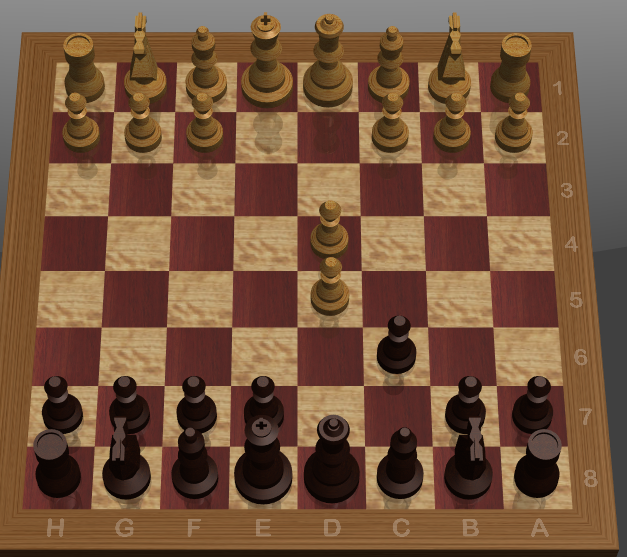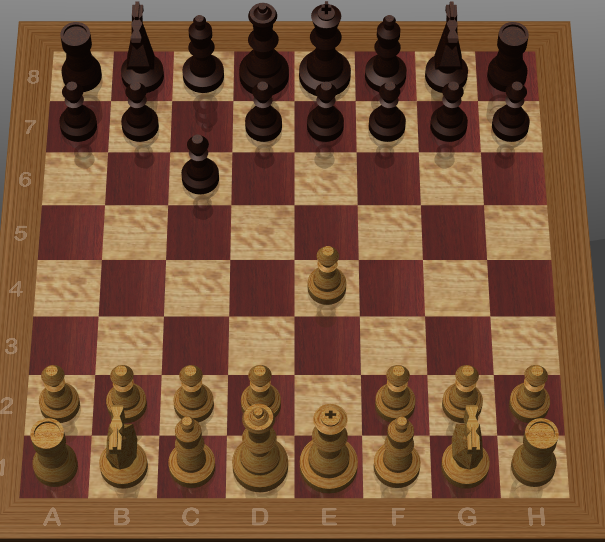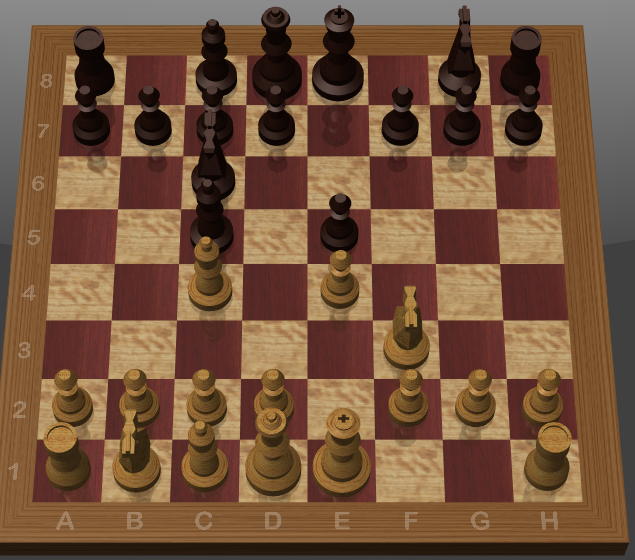White and black are both concerned with controlling the center of the board. One approach for white is the center game, this is a direct and early assault on the center by white.
- e4 e5
- d4
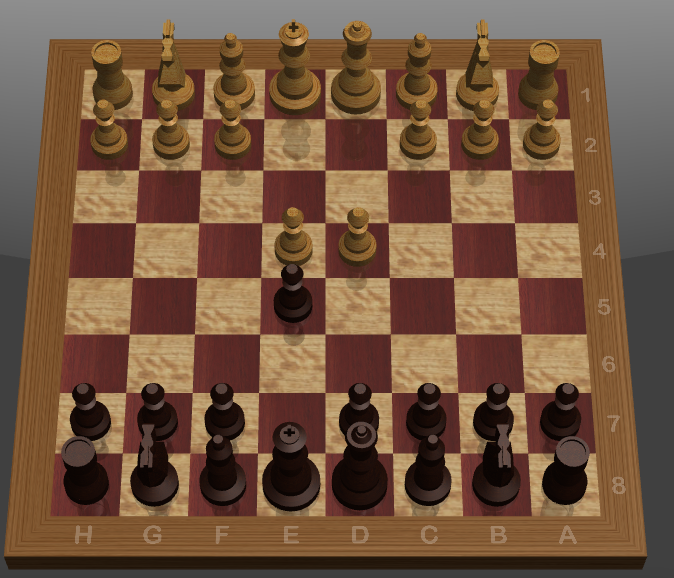
White is immediately trying to get control of the center. Black has a few choices; black can take the pawn or black can protect the pawn. Let’s see what happens when black protects the pawn:
- e4 e5
- d4 d6
- Nf3
By moving to d6, black protects e5. However, this is done at the price of limiting the development of the black king bishop. Yes the bishop could be developed to b7, but this is going to take a few moves to set up and in the meantime things will be happening in the center. Now that white has developed Nf3 that knight will be instrumental in getting control of the center. Similarly, moving 2. d4 f6 will protect e5, but it will cramp the development of the queen’s knight for black.
With that in mind, black’s best option is to take the pawn.
- e4 e5
- d4 e5xd4
- Qxd4 Nc6
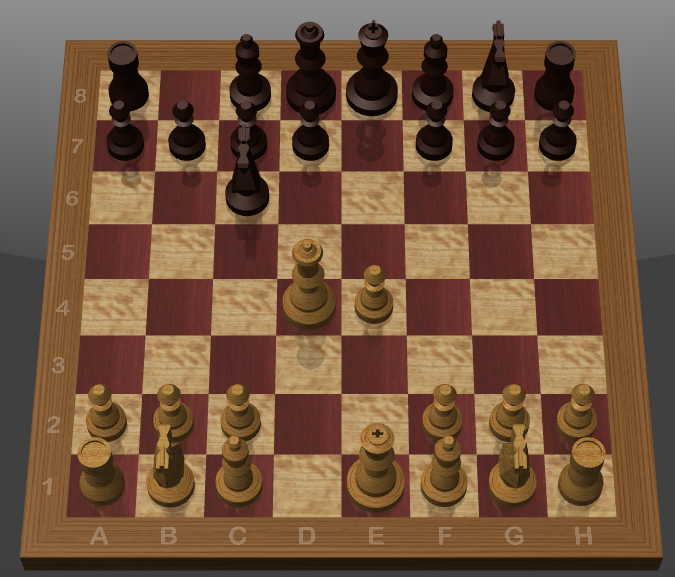
Black takes d4. White takes the black pawn at d4 using the queen, but this develops the queen too early and leaves it open to attack (3. …Nc6). Now white must protect the queen while this leaves black free to develop its pieces.
- e4 e5
- d4 e5xd4
- Qxd4 Nc6
- Qe3 Nf6
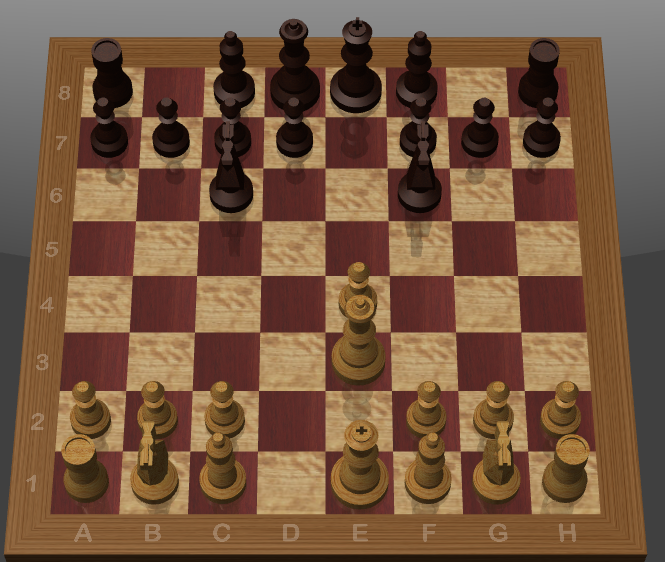
At this point, black has some options. Black can use its king bishop to put white into check, allowing black to castle. Black can also set up to take the pawn at e4 by moving its bishop to e7 and still allowing black to castle short.
As you can see, this is not a terrific opening for white – though it’s a great one for black!

